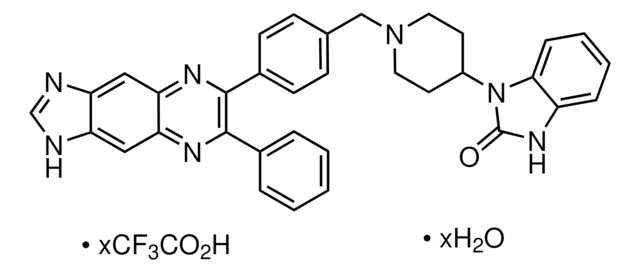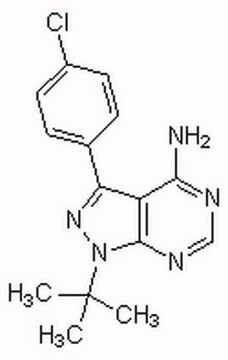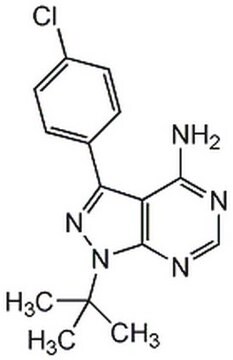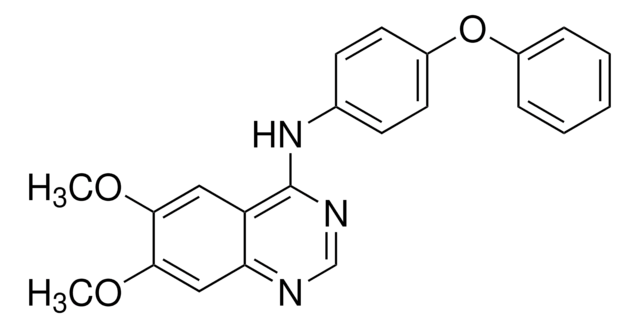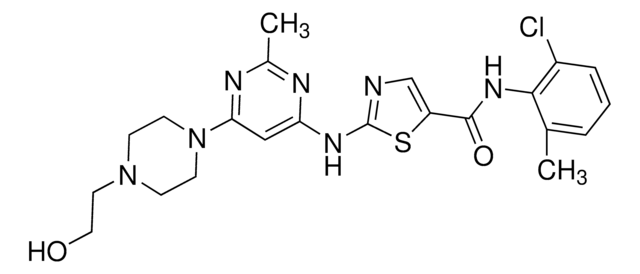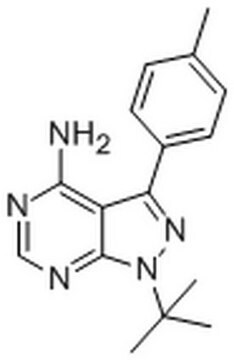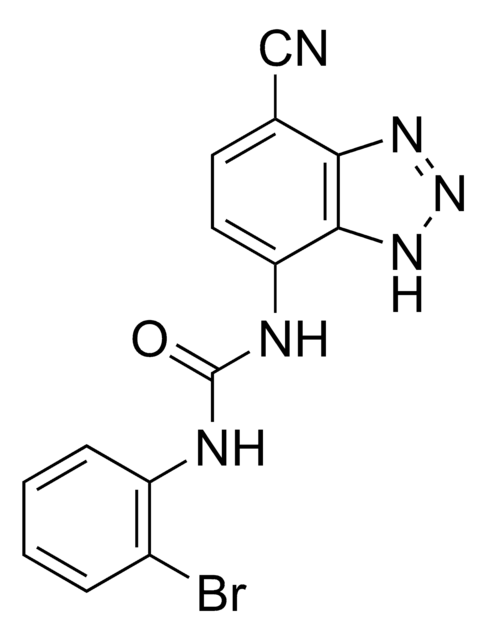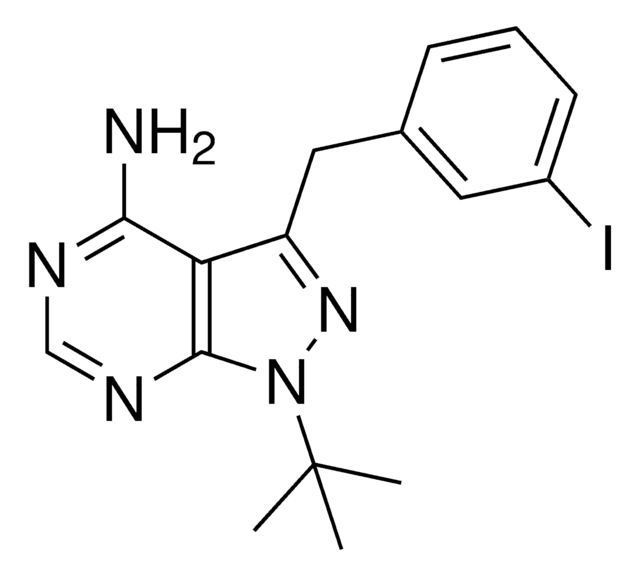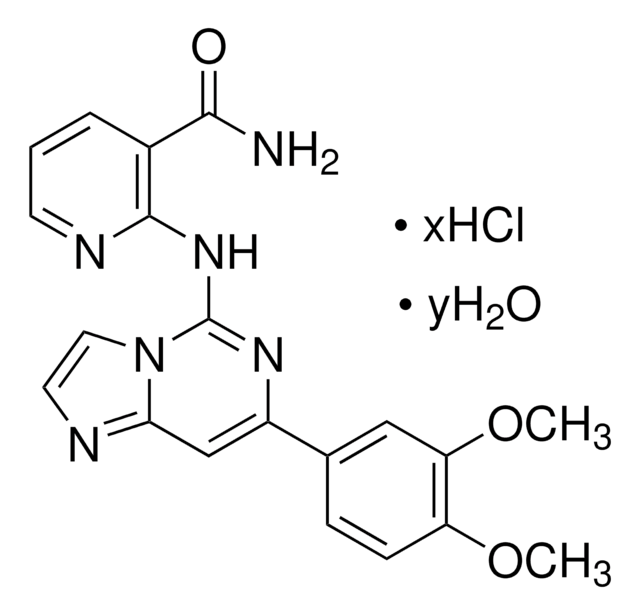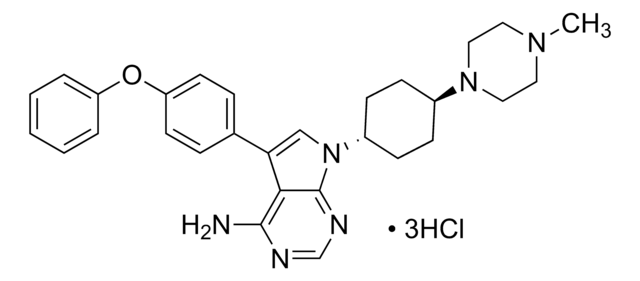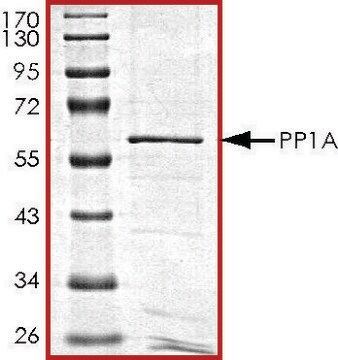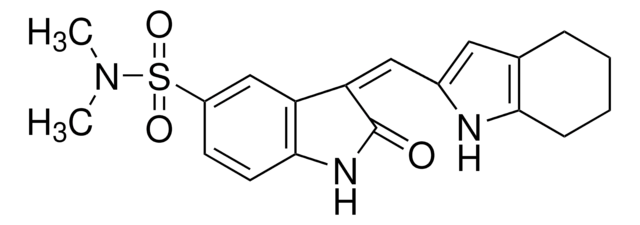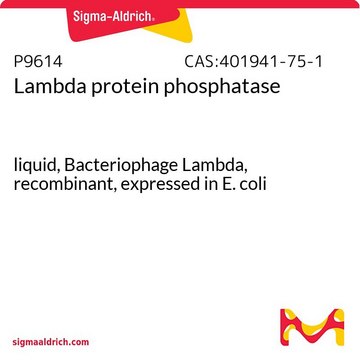P0040
PP1
≥98% (HPLC)
Sinonimo/i:
4-Amino-5-(methylphenyl)-7-(t-butyl)pyrazolo-(3,4-d)pyrimidine
About This Item
Prodotti consigliati
Livello qualitativo
Saggio
≥98% (HPLC)
Forma fisica
powder
Colore
white to off-white
Solubilità
DMSO: >20 mg/mL
Temperatura di conservazione
room temp
Stringa SMILE
Cc1ccc(cc1)-c2nn(c3ncnc(N)c23)C(C)(C)C
InChI
1S/C16H19N5/c1-10-5-7-11(8-6-10)13-12-14(17)18-9-19-15(12)21(20-13)16(2,3)4/h5-9H,1-4H3,(H2,17,18,19)
ZVPDNRVYHLRXLX-UHFFFAOYSA-N
Applicazioni
- an inhibitor of sarcoma (Src) family kinases (SFK) like hematopoietic cell kinase (hck) and fyn
- a selective Src tyrosine kinase inhibitor in hippocampal neuronal cultures to test its effect on neurite growth
- a Src-kinase blocker to test its effect on brimonidine (BMD)-induced phosphorylation in extracellular signal-activated kinases(ERK1/2)
Azioni biochim/fisiol
Caratteristiche e vantaggi
Codice della classe di stoccaggio
11 - Combustible Solids
Classe di pericolosità dell'acqua (WGK)
WGK 3
Punto d’infiammabilità (°F)
Not applicable
Punto d’infiammabilità (°C)
Not applicable
Certificati d'analisi (COA)
Cerca il Certificati d'analisi (COA) digitando il numero di lotto/batch corrispondente. I numeri di lotto o di batch sono stampati sull'etichetta dei prodotti dopo la parola ‘Lotto’ o ‘Batch’.
Possiedi già questo prodotto?
I documenti relativi ai prodotti acquistati recentemente sono disponibili nell’Archivio dei documenti.
I clienti hanno visto anche
Il team dei nostri ricercatori vanta grande esperienza in tutte le aree della ricerca quali Life Science, scienza dei materiali, sintesi chimica, cromatografia, discipline analitiche, ecc..
Contatta l'Assistenza Tecnica.